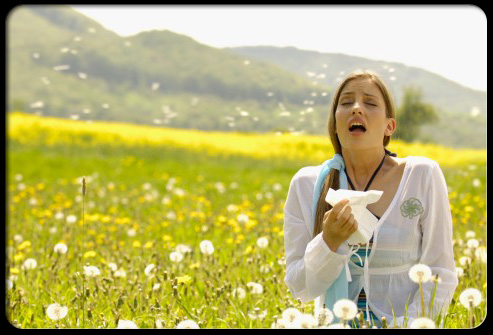
It starts on the first beautiful day every spring. Your car is covered with a fine layer of sticky yellow dust. Your eyes begin to water, your throat itches, your head aches and you can’t stop sneezing. It is allergy season. Let the suffering begin. It is the price we pay for the lovely flowers that bloom in the Lowcountry, people say. It’s not just the flowers. Our favorite shade trees are among the biggest culprits.
The truth is that the allergens are here almost year-round. There are just more of them in play during spring and fall. In the spring, most of the yellow stuff is caused by a variety of trees as they start their growing season. They include oaks – there are many varieties and they are copious pollen shedders – and pecan trees, which are ubiquitous here. A collection of weeds, such as ragweed, plus certain grasses, make up the spring mix. That nasty ragweed is also very active in the fall when weeds and grasses re-seed for next year. The mix of pollen producers changes with the seasons.
The allergens settle down somewhat in the summer, only to come back full force during the fall months as grasses and weeds (yes, ragweed again!) flare up. When you inhale those allergens, your immune system mistakes the pollen for an enemy and gears up for battle by creating histamines. Those histamines make you feel miserable, bringing on nasal congestion, sneezing, coughing and fatigue. Your eyes, nose and throat itch. Your sinuses are inflamed so your face literally hurts. Those red watery eyes are not your best look.
For the 50 million seasonal allergy sufferers in the United States, it is practically impossible to avoid the pollen. It is not only on the car, it is in the car. It is tracked into your house by your pets and by you, your friends and your family members.
How do you cope? Simple solutions include showering after you’ve been outside to wash that stuff off your body and out of your hair. Neti pots are used by many people to wash irritants from the nasal passages. Your local drug stores also sell masks to control how much pollen you inhale, but most sufferers muddle through without this pseudo-fashion accessory.
If you need medicine, antihistamines help control the symptoms; over-the-counter brands include Zyrtec, Claritin and Benadryl. Decongestants might ease the congestion, but they can raise your blood pressure, so they must be taken with care. Nasal sprays also are useful but should be used short-term only. Serious sufferers may be forced to seek medical help to reduce the symptoms and avoid further complications such as sinusitis or even asthma.
Allergies can occur in childhood or may pop up in middle age; some people are lifelong sufferers. A few people outgrow allergies, but, for the most part, there is no cure.
Food allergies are a different classification, but you might be surprised to learn to that they can have a cross-reaction with seasonal allergens. For example, ragweed is related to foods such as chamomile, melons, zucchini, bananas and celery, so enjoying these during times of peak pollen counts can make you feel even worse. You may not have a true food allergy, but the combination of airborne pollen and cantaloupe can make it seem so.
Thanks to modern technology, it is possible to track the pollen counts daily, and one of the easiest solutions is to stay inside and keep the windows closed. Good information about the amount of pollen day by day in your area can be found at www.Pollen.com.
In the Lowcountry, pollen sticks around until winter, perhaps the only advantage of cold weather. So until the weather changes, I’ll see you in the allergy aisle at the pharmacy – right after I have my car cleaned inside and out to get rid of that pesky yellow stuff.
By Barbara Millen Patrick

Leave a Reply